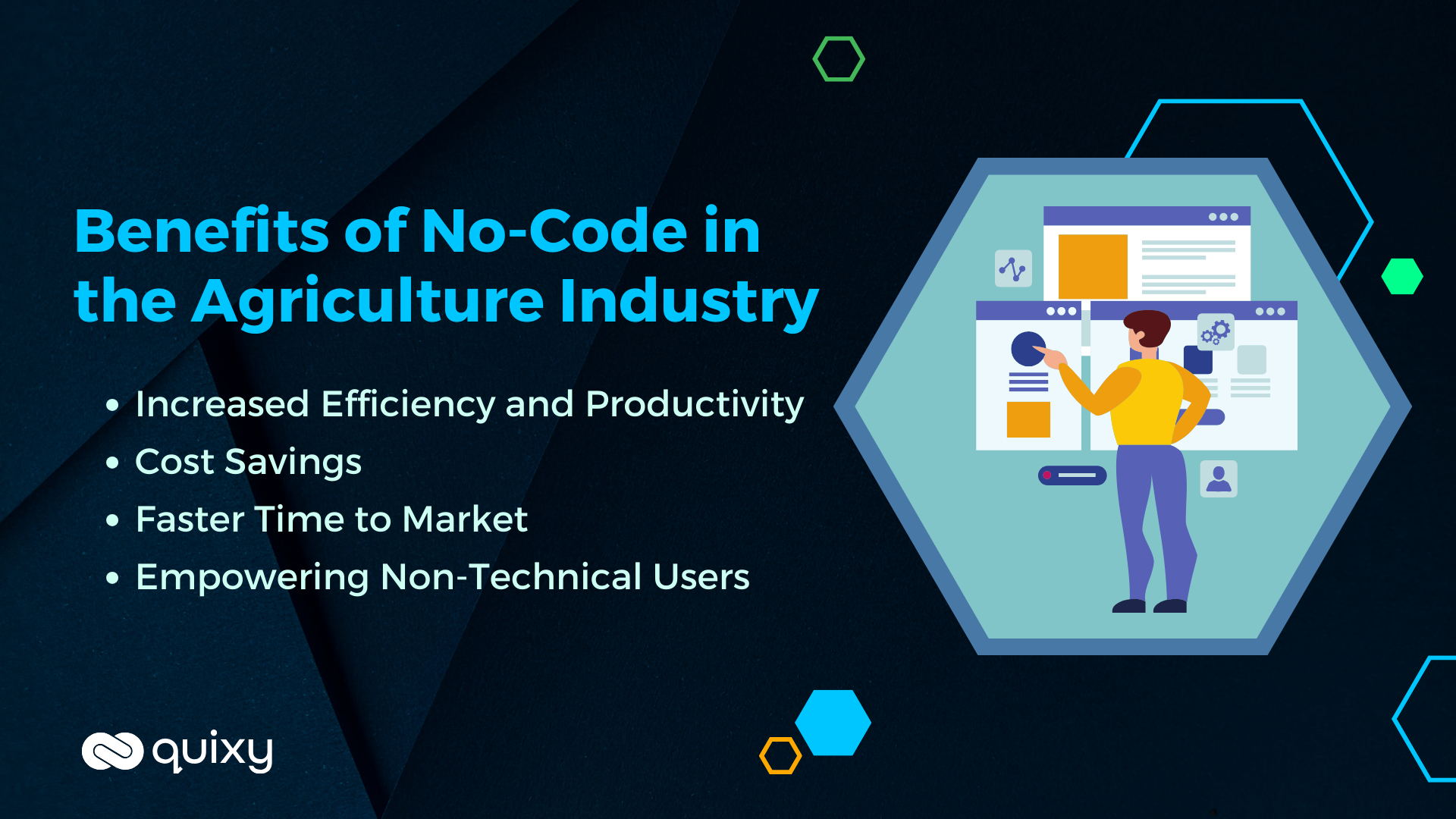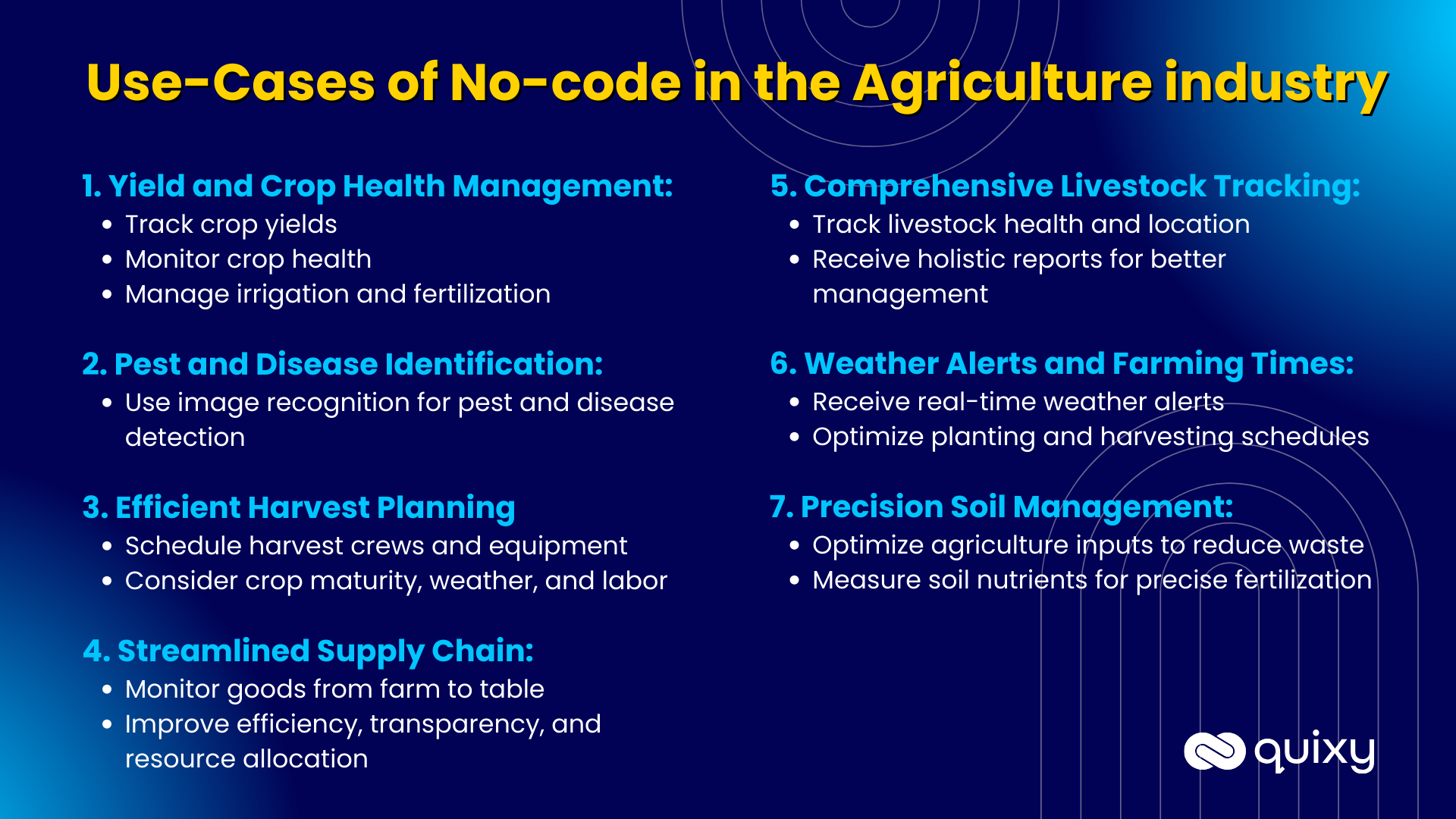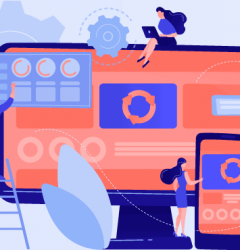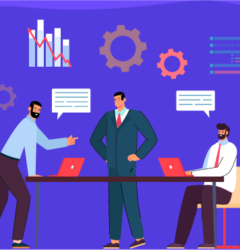
Gains in productivity & technological advances have contributed to more efficient resource use and food safety, and much progress has been made over the past few decades in reducing hunger and poverty. Despite this grim picture of the global agriculture landscape, technological advancements and automation are slowly contributing towards the betterment of this industry. Agriculture is transforming, and “No-code for Agriculture” is at the forefront of this revolution.
No-Code in Agriculture Industry
Advances in machinery have expanded the scale, speed & productivity of farm equipment, leading to more efficient cultivation of more land. Seed, irrigation, and fertilizers have also vastly improved, helping farmers increase yields. Now, agriculture is in the days of yet another revolution, at the heart of which lies Automation. At the forefront of this automation is the No-Code Low-Code (NCLC) platform. These Low-code platforms are software development environments that allow users to create applications with minimal to no coding. They do this by providing visual tools and drag-and-drop functionality, which abstracts away the complexity of traditional programming.
“A world free from hunger and malnutrition, where food and agriculture contribute to improving the living standards of all, especially the poorest, in an economically, socially, and environmentally sustainable manner.”
–Food and Agriculture Organization of the UN
Benefits of No-Code in Agriculture Industry
These No-Code platforms offer a variety of benefits for the agriculture industry, including but not limited to:

Increased efficiency and productivity
The No-code platforms can help farmers automate, streamline processes, and improve communication and collaboration. This can help gain efficiency and productivity significantly.
Cost Savings
Software development and maintenance take up most expenses. These platforms can help farmers to save money on this particular aspect. This is because No-code platforms do not require any coding skills, so farmers can develop custom applications for their work processes by themselves.
Faster Time to Market
No-code platforms can help farmers bring new products and services faster to the market. This is because the development and deployment of applications are quick and easy using these No-code platforms, and farmers do not even have to wait for custom software development projects to be completed, which usually takes up a lot of time.
Empowering Non-Technical Users
Since No-code platforms are designed to be easy to use, even for someone who has no prior knowledge of coding whatsoever, these platforms are an excellent way to encourage such people to develop and deploy these custom applications. This gives these users not only a free hand to develop these platforms the way they want but also to make required changes according to the changing market scenarios without relying on somebody else to do the same.
Also Read: Empowering Business Industries with No-Code Solutions
Use-Cases of No-code in the Agriculture industry
The agriculture industry is so massive that it is nearly impossible to control it. However, we can surely put some systems in place that can automate the processes that require a lot of manual labor. These No-code platforms can develop various applications to help us do the same in the agriculture industry. Some of these applications are:

Crop Management
These platforms can be used to develop custom applications to:
- Track crop yields
- Monitor crop health
- Manage irrigation and fertilization
For eg: An application developed by a farmer to track crop yields by crop type that can generate reports on the yield trends and identify underperforming fields. This information can help farmers to make better decisions about crop rotation, fertilizer application, and irrigation.
Pest and Disease Detection
Farmers can develop applications that use images to detect pests and diseases in crops using the No-code platforms. E.g., A farmer can develop an application that uses image recognition to scan crops from a UAV. The application would be trained using a dataset of images of healthy crops and images of crops with pests and diseases. The application will then have enough data to differentiate healthy crops from those affected by pests.
Harvest Planning
A farmer could use these No-code platforms like Quixy to develop an application that helps them schedule harvest crews and equipment. This application could consider crop maturity, weather conditions, and labor availability. Such application will also help them to track crop maturity and predict harvest dates, thus adding a layer of efficiency to the entire work process.
Supply Chain Management
The supply chain remains one of the most difficult processes to manage in the agriculture industry, the reason being the unpredictable market conditions and the ground reality of what is required. A custom application developed by farmers to track the movement of goods from farm to fork will lead to an efficient working process. Still, it will also ensure that resources are used exactly where required. This will help businesses to improve efficiency, transparency, and traceability.
Livestock Monitoring
These platforms can be used to develop custom livestock monitoring applications for farms of all sizes. Imagine an application that could track the health of the livestock using sensors in the animals’ collars, an application that could track the live location using GPS in their collars, or an application that can do both and then provide reports to have a holistic view of livestock health and management.
Weather Forecasting
Platforms like Quixy are very powerful and can be used to develop custom applications for a wide range of weather-related tasks, such as real-time weather alerts and optimal time for irrigation, among others. E.g., an application that alerts the farmers of an upcoming storm can help farmers adjust their schedule for planting and harvesting the crops.
Precision Farming
According to a study by the Food and Agriculture Organisation of the United Nations(FAO), up to 40 % of all agriculture inputs are wasted due to inefficient practices. Now imagine an application that measures the nutrient level of the soil through sensors and tells you exactly how much organic fertilizer is required. It will not only help reduce costs by avoiding wastages but also keep the soil in its optimum condition, thus reducing the overall environmental impact due to farming.
Also Read: 10 Powerful Solutions You Can Build with No-Code Tools

No-Code Low-Code Applications
The processes mentioned earlier are indeed critical for effective agriculture management. Nevertheless, it’s essential to recognize that these No-Code Low-Code platforms can also contribute significantly to various other important use cases. Here are some additional applications where these platforms can play a vital role:
Integrate data from Weather APIs, Sensors, and satellite Imagery
Integrating data from various sources and giving a prediction can help farmers make better decisions about crop management, irrigation, and pest control. For example, farmers can use weather data to predict droughts and floods, sensor data to track soil moisture and nutrient levels, and satellite imagery to monitor crop health and identify pests and diseases, as explained above.
Manage farm equipment maintenance
Applications to help farmers check farm equipment maintenance can reduce downtime and improve equipment efficiency. For example, using these applications, farmers can build predictive maintenance software to identify potential problems with equipment before they cause a breakdown.
Develop tools for Agricultural Education and Training
Developing learning management systems for farmers to learn new skills and stay up-to-date on the latest agricultural practices can be a huge advantage. For example, Farmers can use educational software to learn about new crop varieties, irrigation techniques, and pest management strategies.
Generate Customised reports on Crop status
These kinds of applications developed on Low-code platforms like Quixy can help farmers track the progress of crops and identify areas where they need to make adjustments. For example, Farmers can get reports on crop yields, nutrient levels, and pest and disease infestations.
Scalable solutions with evolving needs
New applications can be developed to provide solutions that can grow with the farmer’s business and adapt to changing needs. For example, These solutions developed remain capable enough to handle more data as farmers grow regarding farm size, yield, equipment, etc.
Also Read: Everything you should know about No-Code Development
Future trends and Opportunities for No-Code in the Agriculture industry
The NCLC platform market is already gaining momentum, encompassing various industries, with agriculture being a prominent sector now falling under its expansive umbrella. Projections from various studies suggest that this market is expected to grow further in the upcoming years. Below are some of the future trends and opportunities, specifically in the agriculture industry :
- AI-Powered Automation: No-code platforms are incorporating Artificial Intelligence at an ever-increasing rate to automate tasks and provide more intelligent insights to users. This trend is only expected to continue in the upcoming years as AI becomes more affordable and sophisticated.
- Customization and personalization: No-code platforms are becoming more customizable and personalized, allowing users to create applications tailored to their needs. This trend will make No-code even more attractive to farmers and other agriculture stakeholders.
- Collaboration and team-based development: As team sizes grow, no-code platforms are making it easier for these teams to collaborate on the development and deployment of these applications. This trend is expected to lead to the creation of more complex and sophisticated applications for the agriculture industry.
To underscore the trends and opportunities mentioned above, we can look to pertinent statistics and industry trends that vividly illustrate the rapid adoption of No-Code/Low-Code solutions within the agriculture sector as an integral part of its daily operations:
- According to a report by MarketsandMarkets, the global no-code/low-code platform market is expected to grow from $18.81 billion in 2020 to $132.03 billion by 2027, at a CAGR of 37.8%.
- The agriculture industry is one of the fastest-growing adopters of no-code/low-code platforms. A recent survey by Quixy found that 85% of agricultural businesses are using or planning to use no-code/low-code platforms in the next year.
Also Read: Your Guide to Warehouse Management Success
Conclusion
No-Code platforms like Quixy can offer several benefits for the agriculture industry, including but not limited to increased efficiency and productivity, cost savings, faster time to market, and the empowerment of Non-technical users. It can also be used to develop a wide range of applications, each of which is explained above in detail. The future of No-code in the agriculture industry is bright. As no-code platforms become more sophisticated and affordable, they will be used to develop even more innovative and impactful applications for farmers and other agricultural stakeholders.
Frequently Asked Questions (FAQs)
Q. What is “No-code for Agriculture,” and how can it benefit farmers?
“No-code for Agriculture” refers to a user-friendly technology that empowers farmers to create custom digital solutions without coding skills. These solutions simplify various farming tasks, from data management to process automation. This technology benefits farmers by enhancing productivity, reducing operational complexities, and enabling more informed decision-making on the farm.
Q. Do I need technical skills to use no-code solutions in agriculture?
No, technical skills are not required to use no-code solutions in agriculture. No-code platforms are specifically designed to be accessible to individuals without coding expertise. They offer intuitive interfaces and drag-and-drop functionality, making it easy for farmers to create and customize applications to suit their unique needs. This user-friendliness ensures that farmers can harness the power of technology without a steep learning curve.
Q. Can no-code tech help improve crop yields and farm efficiency?
Yes, no-code technology has the potential to significantly enhance crop yields and farm efficiency. By allowing farmers to create tailored applications for tasks like data analysis, automated irrigation, and pest control, no-code solutions enable more informed decision-making and streamlined operations. This leads to better resource utilization, reduced wastage, and ultimately, improved agricultural productivity.
Q. Are there specific applications for no-code in livestock farming?
Absolutely, no-code solutions can be applied effectively in livestock farming. Farmers can use no-code platforms to develop applications for tasks such as monitoring animal health, managing breeding programs, tracking feed and resource usage, and even automating feeding systems. These custom applications help livestock farmers improve their management practices, ensuring healthier and more productive livestock operations.
Q. How can I get started with no-code tools for agriculture on my farm?
Getting started with no-code tools for agriculture is straightforward. Begin by researching and selecting a suitable no-code platform that aligns with your farming needs. Many platforms offer resources like tutorials and customer support to assist you in building and customizing applications. You can start with smaller projects and gradually expand your use of no-code technology as you become more comfortable with the tools. This approach allows you to harness the benefits of no-code solutions at your own pace.
Subscribe
Login
Please login to comment
0 Comments
Oldest















